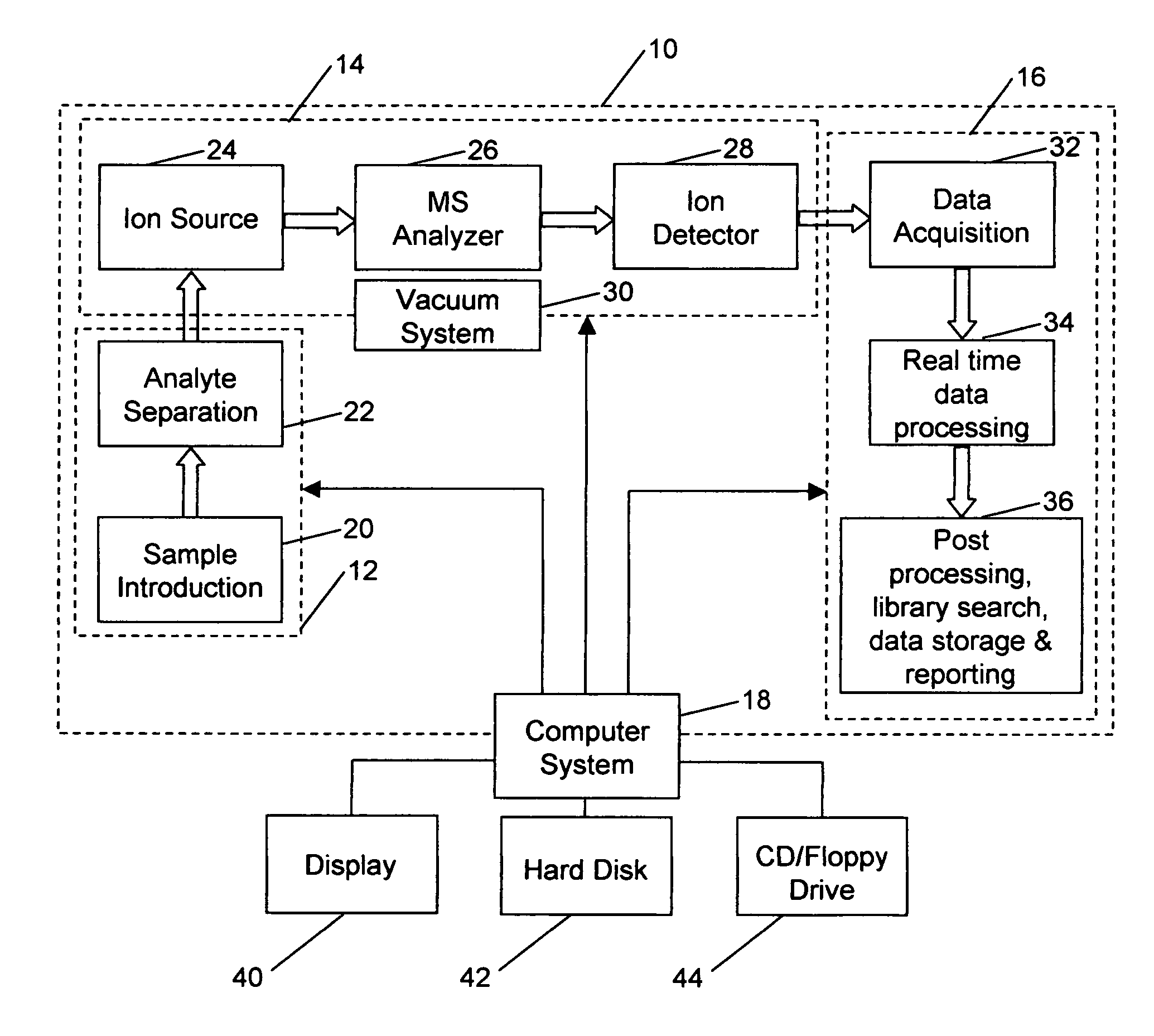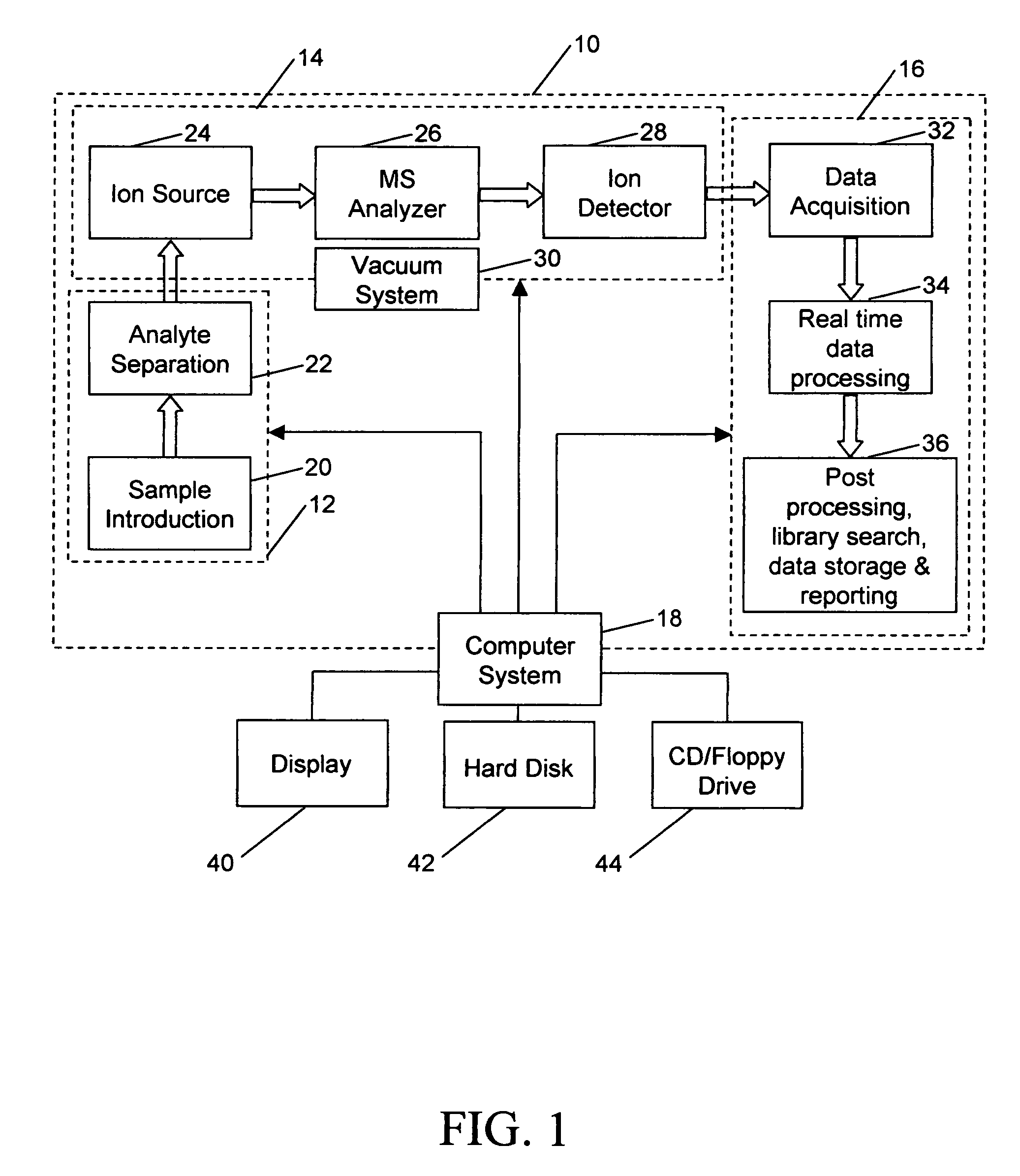Application of comprehensive calibration to mass spectral peak analysis and molecular screening
a mass spectral peak analysis and comprehensive calibration technology, applied in the field of mass spectrometry systems, can solve the problems of limiting the mass accuracy achievable and useful for related applications, the mass spectral centroiding process can rarely provide better than 0.1 da in mass accuracy, and the determination of charge state is quite a challenge. , to achieve the effect of accurately determining the charge state and efficiently deconvoluting mass spectral data
- Summary
- Abstract
- Description
- Claims
- Application Information
AI Technical Summary
Benefits of technology
Problems solved by technology
Method used
Image
Examples
Embodiment Construction
[0068]The operation of an analysis system, including a mass spectrometer, in which the present invention may be used, as illustrated in FIG. 1, is set forth in detail in International Patent Application PCT / US2004 / 034618 filed on Oct. 20, 2004 and International Patent Applications PCT / US04 / 013096 and PCT / US2004 / 013097 both filed on Apr. 28, 2004.
[0069]As pointed out in U.S. Pat. No. 6,983,213, International Patent Application PCT / US2004 / 034618 filed on Oct. 20, 2004 and International Patent Applications PCT / US2004 / 013096 and PCT / US2004 / 013097 both filed on Apr. 28, 2004, the fully calibrated mass spectral continuum data preserves the data integrity and key mass spectral information for further data processing and hypothesis testing. A few of these further aspects and applications will be described in detail along with results for their preliminary applications.
Peak Purity Assessment:
[0070]When an actual mass spectral peak has been fully calibrated, its peak width and peak shape is f...
PUM
 Login to View More
Login to View More Abstract
Description
Claims
Application Information
 Login to View More
Login to View More - R&D
- Intellectual Property
- Life Sciences
- Materials
- Tech Scout
- Unparalleled Data Quality
- Higher Quality Content
- 60% Fewer Hallucinations
Browse by: Latest US Patents, China's latest patents, Technical Efficacy Thesaurus, Application Domain, Technology Topic, Popular Technical Reports.
© 2025 PatSnap. All rights reserved.Legal|Privacy policy|Modern Slavery Act Transparency Statement|Sitemap|About US| Contact US: help@patsnap.com



